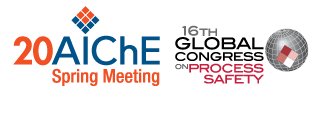

The benefits of APC include increased throughput, reduced variation, constraint avoidance, etc. And these can be combined to represent a daily economic-equivalent benefit for the application, the same anticipated benefit that led to justification of the APC installation. As the process characteristics deviate from those representing the model, control functionality degrades, and the equivalent economic benefit of the APC installation declines. Recalibration has a cost, which is desirably avoided. Recalibration of the APC can restore APC benefit. If recalibration is performed when the functional benefit of the APC installation is high, there is little gained from the recalibration cost. However, if recalibration is postponed, the loss of economic benefit of the APC installation can be greater than the cost of recalibration.
A procedure has been developed that employs dimensionless equations to compute the optimum recalibration interval. This optimum recalibration interval is based on a form of decline in performance that is modeled based on the owner-user performance criteria. Further, the dimensionless numbers can be used to compare the performance across units of similar types and across industries. The form of the equation allows for quantitative processes to change the interval for continuous improvement in the recalibration procedure. This continuous improvement process is based on learning curve theory.
Presenter(s)
Language
Pricing
Individuals
| AIChE Member Credits | 0.5 |
| AIChE Pro Members | $19.00 |
| Fuels and Petrochemicals Division Members | Free |
| AIChE Graduate Student Members | Free |
| AIChE Undergraduate Student Members | Free |
| AIChE Explorer Members | $29.00 |
| Non-Members | $29.00 |
